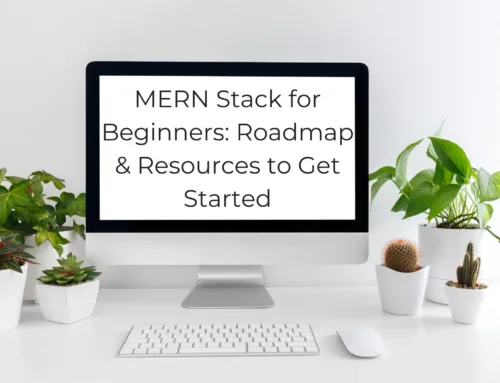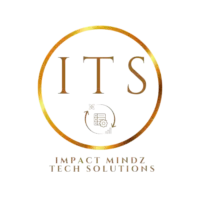In the ever-evolving landscape of e-commerce, where customer expectations soar at the speed of a swipe, crafting a captivating mobile frontier app experience is no longer a luxury, it’s a necessity. Seamless navigation, intuitive design, and lightning-fast performance are all crucial ingredients in the recipe for mobile app success. But how do you achieve this delicate balance without breaking the bank or sacrificing development time? Enter Flutter development, a revolutionary framework poised to redefine the mobile app development landscape.
This blog post dives deep into the world of Flutter development, exploring its core functionalities, contrasting it with traditional web development approaches, and outlining a comprehensive roadmap for aspiring Flutter developers. Whether you’re a seasoned developer seeking a new frontier to conquer or a business owner yearning to elevate your mobile frontiers app presence, this deep dive will equip you with the knowledge and resources to harness the power of Flutter.
The Crossroads: Flutter Development vs. Web Development
For years, web development served as the go-to solution for businesses seeking a quick and cost-effective way to establish a mobile frontier app presence. However, web apps often fall short of delivering a truly native experience. Users can feel a disconnect between the app and their devices, resulting in sluggish performance and a less engaging interaction. This disconnect can translate to lost sales, frustrated customers, and ultimately, a tarnished brand image.
Flutter development breaks free from these limitations. It empowers developers to build beautiful, feature-rich mobile frontier applications that operate flawlessly on both iOS and Android devices. We’re not talking about simply porting a web app to mobile; we’re crafting native experiences that leverage the full potential of each platform, ensuring a smooth and intuitive user experience.

Here’s a breakdown of the key advantages that set Flutter apart:
- Cross-Platform Development: Imagine writing code once and deploying it seamlessly on both iOS and Android platforms. This translates into significant savings in terms of time, resources, and development costs.
- Hot Reload: This revolutionary feature allows developers to see their code changes reflected in the app instantly. This eliminates the need for lengthy compilation processes, accelerating the development cycle and enabling rapid iteration on design and functionality.
- Rich Animations & UI: Flutter excels at creating visually stunning user interfaces (UIs) with smooth animations and fluid transitions. From captivating micro-interactions to complex graphical elements, Flutter empowers developers to craft apps that are not only functional but also aesthetically delightful.
- Native Performance: Unlike web apps, Flutter applications feel truly native to each platform. This ensures a smooth and responsive user experience that keeps customers engaged and coming back for more.
Unveiling the Magic: Demystifying Flutter’s Core Functionality
So, how does Flutter achieve this cross-platform magic? At its heart lies the concept of widgets. Flutter applications are built by meticulously combining pre-built widgets, much like Lego bricks, to create complex and visually appealing UIs. This approach streamlines the development process and fosters consistency across different platforms.
But widgets are just the tip of the iceberg. Here’s a deeper look into some of the key functionalities that make Flutter tick:
- Dart Programming Language: Flutter utilizes Dart, a modern and object-oriented programming language known for its clean syntax and strong developer community. If you’re familiar with languages like Java, Javascript, or Kotlin, picking up Dart should be a breeze.
- Skia Graphics Engine: Powering the stunning visuals and smooth animations is the Skia graphics engine. This engine renders graphics directly on the device’s canvas, bypassing the need for web views or intermediary layers. This translates to superior performance and a more responsive user experience.
- Stateful vs. Stateless Widgets: Flutter offers two primary widget types: stateful and stateless. Stateful widgets hold data that can change dynamically, while stateless widgets represent a fixed UI element. Understanding the distinction between these two types is crucial for building interactive and dynamic applications.

Embarking on the Flutter Journey: A Roadmap for Beginners
Intrigued by the possibilities Flutter presents? You’re not alone! Here’s a comprehensive roadmap to guide you on your journey to becoming a proficient Flutter developer:
1. Mastering the Fundamentals: Embrace Dart
The first step on your Flutter expedition is conquering Dart. Fortunately, there are abundant resources available online to help you navigate the language’s intricacies.
Here are a few recommendations:
- The Official Dart Documentation: https://dart.dev/ serves as an invaluable resource, offering tutorials, a comprehensive language guide, and even interactive coding exercises.
- Online Courses: Platforms like Coursera, Udemy, and Udacity offer a plethora of beginner-friendly Dart courses that can equip you with the essential programming skills.
2. Delving into the World of Widgets: Building Blocks of Flutter Apps
Once you’ve grasped the fundamentals of Dart, it’s time to dive into the heart of Flutter development – widgets. Here’s how to embark on this exciting exploration:
The Official Flutter Documentation: The Flutter documentation offers a wealth of information on widgets, including in-depth explanations, code examples, and best practices. Start by exploring the “Widget Catalog” section which provides a visual and interactive playground for understanding different widget functionalities.
Interactive Tutorials: Several online platforms offer interactive tutorials specifically designed to teach you about Flutter widgets. These tutorials often involve building small, functional apps, allowing you to learn by doing. A popular option is the “Flutter for Beginners” course at https://www.tutorialspoint.com/flutter/index.htm.
Practice Makes Perfect: The best way to solidify your understanding of widgets is by putting your newfound knowledge into action. Start with simple projects like building a basic calculator app or a to-do list app. As you grow more confident, progressively enhance the complexity of your projects.
3. Mastering the Art of Navigation: Guiding Users Through Your App
As you build more intricate applications, the need for navigation becomes paramount. Flutter provides a robust navigation system that allows users to seamlessly move between different screens within your app.
Here’s how to get started:
The Navigator Widget: The Navigator widget acts as the conductor of your app’s navigation system. It manages the stack of screens and facilitates transitions between them. Explore the different navigation options offered by Navigator, such as push replacement, pop, and push And Remove Until.
Named Routes: For larger applications, using named routes can significantly improve code organization and readability. Named routes provide a way to define different screens in your app and navigate to them using their designated names.
Building a Navigation Bar: A well-designed navigation bar provides users with a clear understanding of their location within the app and a convenient way to access different functionalities. Learn how to create custom navigation bars using Flutter’s widgets and explore existing navigation packages for added functionalities.
4. State Management: Keeping Your App Dynamic
The ability to manage data that can change within your app is crucial for building interactive and engaging experiences. Flutter offers different approaches to state management, allowing you to choose the one that best suits your project’s needs.
Built-in State Management (Stateful Widgets): For simpler applications, Flutter’s built-in state management using set State can suffice. This approach allows you to update the UI whenever the state of your widget changes.
Provider Package: As your application complexity grows, consider utilizing the Provider package. This popular package simplifies state management by providing a centralized way to manage and access application state from anywhere in your widget tree.
Advanced State Management Solutions: For large-scale applications, explore advanced state management solutions like BLoC (Business Logic Component) or MobX. These libraries offer robust features and patterns for managing complex application states.

5. Building for Both Worlds: Understanding Platform Channels
Remember, Flutter’s magic lies in its ability to build apps for both iOS and Android. However, there might be situations where you need to interact with native device functionalities specific to each platform. This is where platform channels become crucial.
Platform Channels: Platform channels enable communication between your Flutter code and the native code of the underlying platform (iOS or Android). This allows you to access device-specific features like camera, GPS, or local storage.
Third-Party Packages: Many pre-built Flutter packages handle platform-specific functionalities, eliminating the need to write native code yourself. Explore the rich ecosystem of Flutter packages to find solutions that address your specific needs.
6. Embrace the Community: Learning from the Best
The Flutter developer community is a vibrant and supportive hub for learning and collaboration. Here are some ways to tap into its wealth of knowledge:
Official Flutter Documentation: The Flutter documentation includes a dedicated section for community resources, where you’ll find links to forums, blogs, and sample code repositories.
Stack Overflow: Stack Overflow is a go-to platform for developers seeking answers to programming challenges. Search for Flutter-related questions and learn from the solutions provided by experienced developers.
Flutter Medium Publications: Several publications on Medium focus specifically on Flutter development. Follow these publications to stay updated on the latest trends, tutorials, and best practices in the Flutter world.
7. Sharpen Your Skills: Building a Portfolio
As you progress on your Flutter journey, consider building a portfolio of projects that showcase your skills and experience. This portfolio could be a personal website or a collection of mobile frontier apps hosted on app stores.
Explore these tips to craft a standout portfolio:
- Focus on Diversity: Don’t limit yourself to one type of app. Showcase your versatility by building projects that encompass different functionalities and design styles. This could include a simple to-do list app, a more complex social media clone, or even a visually stunning game.
- Open Source Contributions: Consider contributing to open-source Flutter projects. This not only strengthens your understanding of the framework but also demonstrates your willingness to collaborate and learn from others.
- Continuous Learning: The world of technology is constantly evolving, and Flutter is no exception. Make a commitment to continuous learning by staying updated on the latest Flutter releases, exploring new packages, and attending workshops or conferences.
8. Taking the Next Step: Diving into Advanced Topics
Once you’ve mastered the fundamentals and built a solid portfolio, consider exploring some advanced Flutter topics to further enhance your skillset:
- Animations and Transitions: Flutter excels at creating smooth and visually appealing animations. Deepen your understanding of animation concepts and explore libraries like Flare or Rive to create interactive and engaging user experiences.
- Testing and Debugging: As your projects become more complex, robust testing practices become essential. Explore tools like Flutter Driver and learn strategies for effective debugging to ensure the quality and stability of your mobile frontier applications.
- Firebase Integration: Firebase by Google provides a suite of backend services that can significantly streamline your development process. Learn how to integrate Firebase features like authentication, databases, and analytics into your Flutter apps.
- Native App Development: For functionalities that require deeper access to native device capabilities, consider learning the basics of platform-specific development (iOS with Swift or Android with Kotlin). This knowledge can be invaluable for tackling complex challenges.
Building a Flutterful Future
The journey to becoming a proficient mobile frontier Flutter developer is exciting and rewarding. By following this roadmap, embracing the supportive community, and continuously honing your skills, you’ll be well on your way to crafting beautiful, high-performance mobile frontiers applications that captivate users and elevate your brand.
Ready to unlock the potential of Flutter development for your business?
At Impact Mindz Tech Solutions, our team of Flutter experts is passionate about crafting exceptional mobile frontiers experiences. We leverage the power of Flutter to design and develop apps that not only look stunning but also drive results.
Contact us today to discuss your mobile frontier app development needs and discover how Flutter can help you achieve your business goals. https://impactmindz.com/contact/
Together, let’s build a mobile future that’s as captivating as it is functional.






